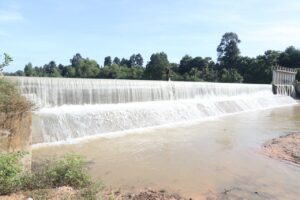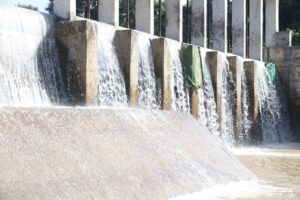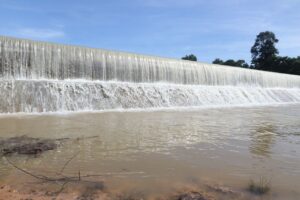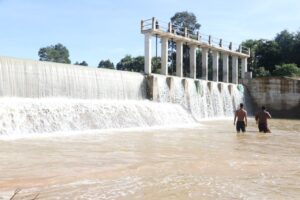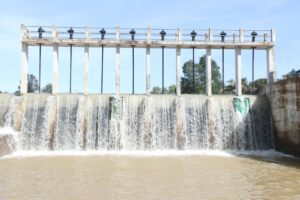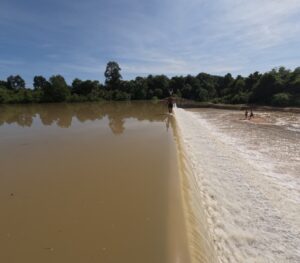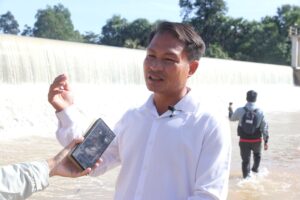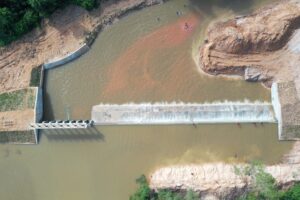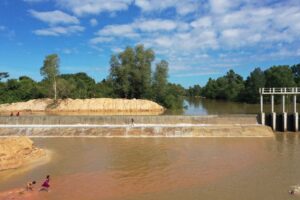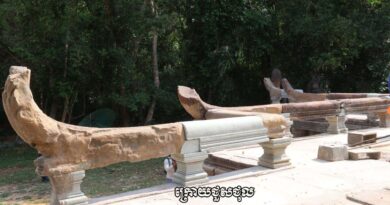ទោះបីស្ថានភាពទឹកភ្លៀងឆ្នាំនេះមានការអូសបន្លាយ និងមិនទៀងទាត់យ៉ាងណាក៏ដោយ ប៉ុន្តែអាជ្ញាធរជាតិអប្សរា បានរៀបចំប្រមែប្រមូលទឹកពេញអាងស្ដុកទឹកទាំងអស់ដែលមានក្នុង តំបន់រមណីយដ្ឋានអង្គរ។ តាមមន្រ្តីអាជ្ញាធរជាតិអប្សរា ទឹកភ្លៀងជាង៦០លានម៉ែត្រត្រីគុណ ឬម៉ែត្រគីប ត្រូវបានប្រមូលទុកនារដូវវស្សាឆ្នាំនេះ។
ប្រធាននាយកដ្ឋានគ្រប់គ្រងទឹក ព្រៃឈើ និងហេដ្ឋារចនាសម្ព័ន្ធ នៃអាជ្ញាធរជាតិអប្សរា លោក ភឿន សុឃីម បានឱ្យដឹងថា គិតមកដល់ខែវិច្ឆិកា ការប្រមូលទឹកចូលអាងស្ដុកទឹកសំខាន់ៗនៅតំបន់រមណីយដ្ឋានអង្គរ គឺសម្រេចបាន១០០ភាគរយ ក្នុងនោះរាប់ទាំងបារាយណ៍តូចធំ កសិន្ធុទឹក អូរ និងប្រឡាយជាដើម។ ទឹកដែលប្រមូលបានទាំងនេះមានបរិមាណជាង៦០លានម៉ែត្រត្រីគុណ ដែលត្រៀមសម្រាប់ការប្រើប្រាស់នារដូវប្រាំងខាងមុខ ក្នុងនោះរាប់ទាំងការងារអភិរក្សប្រាសាទ បរិស្ថាន និងវិស័យកសិកម្មសម្រាប់ប្រជាពលរដ្ឋនៅតំបន់ជុំវិញប្រមាណ៧ពាន់ហិកតា។ អ្នកជំនាញបញ្ជាក់ថា បរិមាណនេះ គឺមានចំនួនប្រហាក់ប្រហែលនឹងឆ្នាំទៅមិញដែរ ដោយមិនបារម្ភពីកង្វះខាតទឹកនៅតំបន់ឡើយ។
បើតាមការបញ្ជាក់ពីលោក ភឿន សុឃីម ការងារគ្រប់គ្រងទឹកនៅតំបន់រមណីយដ្ឋានអង្គរ កាន់តែល្អប្រសើរពីមួយឆ្នាំទៅមួយឆ្នាំ ក្រោយអាជ្ញាធរជាតិអប្សរាបានរៀបចំ និងស្ដារប្រព័ន្ធទឹកបុរាណក្នុងតំបន់រមណីយដ្ឋានអង្គរឡើងវិញចាប់ពីឆ្នាំ២០១២មក។ ជាងនេះទៅទៀត ក្រោមការគិតគូរដ៏វែងឆ្ងាយ និងភាពឈ្លាសវៃពីថ្នាក់ដឹកនាំអាជ្ញាធរជាតិអប្សរា ដោយយល់ពីសារសំខាន់ នៃការងារគ្រប់គ្រងទឹក ដែលធ្វើឱ្យប្រព័ន្ធគ្រប់គ្រងទឹកក្នុងតំបន់កាន់តែមានភាពជឿនលឿន និងមានប្រសិទ្ធភាពខ្ពស់។ តួយ៉ាង នាឆ្នាំ២០២៤នេះ សំណង់ទ្វារទឹកមួយចំនួនត្រូវបានស្ដារ និងជួសជុលឡើងវិញជាបន្តបន្ទាប់ ក្នុងបំណងដើម្បីធានាថា ការងារគ្រប់គ្រងទឹកនឹងមានវិសាលភាព កាន់តែទូលំទូលាយ និងពេញលេញ ដើម្បីបំពេញតម្រូវការក្នុងតំបន់រមណីយដ្ឋានអង្គរ។
ចំពោះការប្រើប្រាស់ទឹកវិញ លោក ភឿន សុឃីម បញ្ជាក់ថា ទឹកមានសារសំខាន់នៅតំបន់ប្រាសាទដោយសារបុព្វបុរសសម័យមុនបានរៀបចំ និងកសាងប្រាសាទដោយមានគ្រឹះដីខ្សាច់ ដូច្នេះទើបកសាងកសិន្ធុជុំវិញដើម្បីបញ្ចូលទឹកឱ្យគ្រឹះរឹងមាំល្អ។ ប្រសិនគ្មានទឹក ប្រាសាទនឹងរងការដួលរលំ និងបាក់បែកខ្លាំង។ ក្រៅពីនេះ ទឹកក៏ជាបង្កើនសម្រស់ និងសោភ័ណភាពនៅតំបន់ប្រាសាទផង។ ទឹកក៏ជួយឱ្យដើមឈើលូតលាស់បានល្អ ទាក់ទាញទេសចរ និងជួយកាត់បន្ថយការកើនឡើងនៃរលកកម្ដៅខ្លាំងនារដូវប្រាំង៕
អត្ថបទ៖ នាង សំណាង
រូបភាព៖ ភោគ ជា, យី សុថា
During this rainy season, the APSARA National Authority has successfully collected over 60 million cubic meters of rainwater across the Angkor site. Despite the challenges posed by prolonged and erratic rainfall, the authority has effectively organized water collection for all reservoirs in the region.
According to Mr. Phoeurn Sokhim, Director of the Department of Water, Forestry, and Infrastructure Management, as of November, the collection of water in the main reservoirs of Angkor has reached full capacity. This includes both small and large barays, moats, streams, and canals. The collected water will be utilized in the upcoming dry season for temple conservation, environmental maintenance, and agricultural needs for approximately 7,000 hectares of surrounding land. Remarkably, the volume of collected water is comparable to that of the previous year, alleviating concerns about potential water shortages in the area.
Mr. Phoeurn Sokhim noted that water management at the Angkor site has seen significant improvements since the APSARA National Authority began restoring the traditional water system in 2012. The authority has recognized the importance of effective water management and has undertaken long-term strategies to enhance local systems. For instance, ongoing restoration and renovation of water gates are aimed at ensuring comprehensive and efficient water management in 2024.
Water plays a crucial role in the temple area, as it was integral to the original design and construction of the temples, which were built on sand foundations surrounded by moats to enhance stability. Without adequate water supply, there is a risk of structural collapse. Additionally, water contributes to the aesthetic appeal of the temples, supports healthy tree growth, attracts tourists, and helps mitigate heat waves during dry seasons.
Article: Neang Samnang
Photos: Phouk Chea, Yi Sotha
Article Translator: Net Phirun


